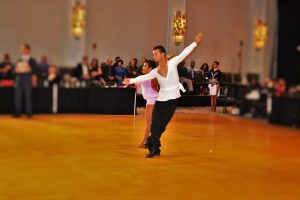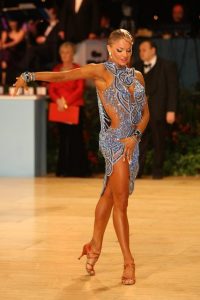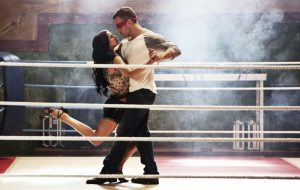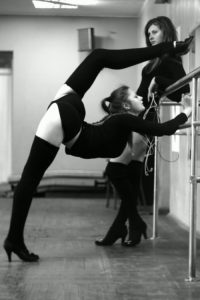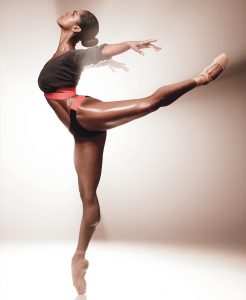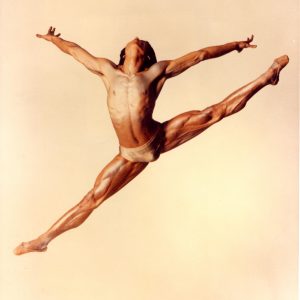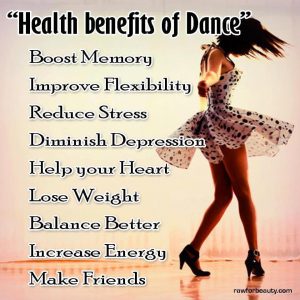When you’re on a budget, there are countless temptations to spend money on things you can’t afford, so you feel robbed when you unexpectedly blow your paycheck on food. It only adds insult to injury when you’re trying to eat healthy and realize that you’ve spent too much by “being good.”
Most dancers strive to eat well, but following some health trends—like buying non-GMO, free-range, organic everything—can be next to impossible on a typical dancer’s salary. Luckily, with a shopping and food-prep game plan, it is possible to eat a nutritious diet without sacrificing your bank account.
Shop In the Right Places
“There’s a halo-effect around certain stores that sell organic foods, but they’re not the only healthy options,” says registered dietitian and nutritionist Sarah Krieger, a media spokesperson for the Academy of Nutrition and Dietetics. She recommends seeking out chain stores—like ALDI, Save-A-Lot and Trader Joe’s—that offer a store-brand alternative to name-brand foods, especially on staples like cereal, yogurt, canned beans and frozen produce.
Heidi Skolnik, a certified dietitian/nutritionist who works with dancers at Juilliard and the School of American Ballet, points out that in big cities, there is a benefit to shopping in Chinatown versus trendier neighborhoods. “And the minute you walk in the door, grab that store circular,” says Skolnik. “Don’t buy what you don’t need, but try to adjust your menu based on good deals.”

Tip: Grow Your Own!
Even a New York City windowsill is big enough for a pot of herbs, like basil or rosemary, which can offer a replenishable source of fresh flavor and nutrients.
Spend Wisely
Protein and dairy can be your biggest food expenses, but dancers in the 18-to-25 age range are at their bone-mass–building peak, so they shouldn’t skimp on them. “Canned salmon, tuna, chicken and shrimp are cheaper than fresh, but snag frozen fish when it’s on sale,” says Krieger. Sales on meat and dairy tend to cycle every four to six weeks, so you can stock up on your favorite cheese, for example, every month or so. “Unless you’re allergic, peanuts are your cheapest option for protein-rich nuts and seeds,” she says. “If you splurge on high-end pine nuts or pistachios, use them in small portions sprinkled over a salad.” She adds that almond milk and other milk alternatives cost more and actually don’t offer as much nutrition for your dollar as cow or soy milk. But only buy what you’ll use—especially if you live alone or travel often. “Hard-boil a dozen eggs for salads or egg salad sandwiches, and they’ll keep for seven days if stored properly,” says Krieger. “And don’t throw out those yolks, which have healthy fats and B vitamins.”
With your activity level, don’t buy pricey fat-free products, when, in fact, you need to pair many vitamins and minerals with fats for the good stuff to be absorbed. “Use an oil-based dressing and add an avocado and cheese to your salad to get the full benefit of its vitamins A, K and D,” suggests Skolnik. She also has a message for the carb-phobic: “Don’t forget that you’re an athlete, and you need the long-term fuel of carbohydrates.” Many kinds of canned beans, which keep for years, are now available with less sodium, and it’s easy to find whole-grain pasta in a generic brand.
But beware of trendy superfoods, like chia seeds, says Krieger. “Demand is high, and crops don’t yield enough to keep costs low. You’re better off taking advantage of something like bananas, which are always the same price and have great health benefits.” It’s cheaper to buy what’s in season, but if you’re craving blackberries in winter, buy them frozen. Fruits and veggies are usually frozen close to where they’re grown, trapping in the nutrients.
Cook Up Variety and Balance
Skolnik suggests spending one day a week in the kitchen, prepping soup, stew or grilled chicken to be used in meals for the rest of the week. For a quick meal, have leftovers from a night out—don’t deny yourself a few of those—and throw them in a pan with frozen vegetables or pasta. If there are certain pricier items that work better for your hectic schedule—like a prepared rotisserie chicken—figure out how to cut back somewhere else. And beware of food ruts, says Skolnik. “Don’t be too rigid. Look to websites and cookbooks to freshen up your menu. You can use the same basic ingredients with a different spice palate and have a whole new dish.
When to Buy Organic
Organic foods always cost more. If you’re worried about pesticides, Heidi Skolnik suggests prioritizing your purchases: Focus on buying organic varieties of the most contaminated produce, nicknamed the “dirty dozen.”
1. Apples
2. Peaches
3. Nectarines
4. Strawberries
5. Grapes
6. Celery
7. Spinach
8. Sweet bell peppers
9. Cucumbers
10. Cherry tomatoes
11. Snap peas (imported)
12. Potatoes
The article was found at dancemagazine
North Shore Dance Society
